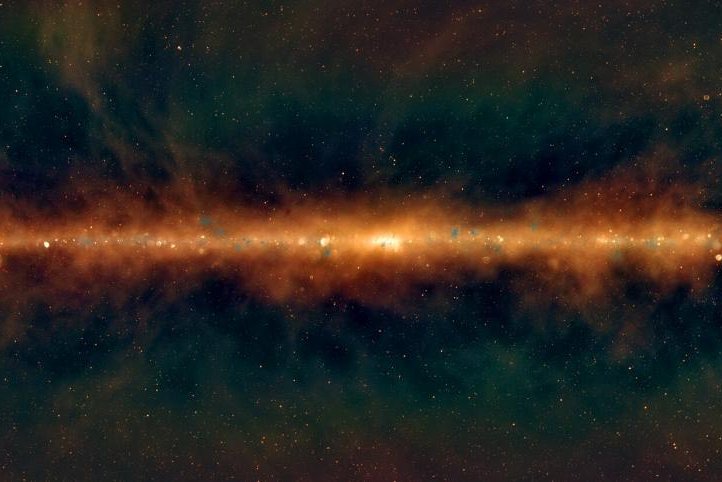In this unique view of the distant plane of the Milky Way, 27 newly discovered supernova remnants, the remains of exploded massive stars, appear as small spherical bubbles. The large golden filaments represent powerful magnetic fields, while regions of massive star formation appear in blue. Photo by Natasha Hurley-Walker (ICRAR/Curtin) and the GLEAM Team
Nov. 20 (UPI) -- With the help of Murchison Widefield Array, a powerful radio telescope located in Western Australia's Outback, astronomers have found the remains of exploded stars in the center of the Milky Way.
The supernova remnants were discovered among images captured by the Galactic and Extragalactic All-sky MWA survey, or GLEAM survey, an effort to map the sky and frequencies between 72 and 231 MHz.
"It's the power of this wide frequency range that makes it possible for us to disentangle different overlapping objects as we look toward the complexity of the galactic center," Natasha Hurley-Walker, an astrophysicist with the International Center for Radio Astronomy Research, said in a news release. "Essentially, different objects have different 'radio colors,' so we can use them to work out what kind of physics is at play."
The supernova remnants identified by Walker and her colleagues represent what were once a population of massive stars, all of them at least eight times more massive than the sun.
Supernova remnants that are very far away or located in sparsely populated regions of space are difficult to see, but the Murchison Widefield Array is powerful enough to locate the distant and faint phenomena.
The survey revealed one supernova remnant all by its lonesome, younger, fainter and more isolate than the rest.
"It's the remains of a star that died less than 9,000 years ago, meaning the explosion could have been visible to Indigenous people across Australia at that time," Hurley-Walker said.
Some Aboriginal traditions in Australia feature stories about bright new stars appearing in the night sky, but there are no known stories about these particular supernovas.
"However, now that we know when and where this supernova appeared in the sky, we can collaborate with Indigenous elders to see if any of their traditions describe this cosmic event. If any exist, it would be extremely exciting," said Duane Hamacher, an associate professor at the University of Melbourne and an expert in cultural astronomy.
Scientists often ignore seemingly empty regions of space, assuming there is little to be found there. But the latest findings -- detailed Wednesday in the Publications of the Astronomical Society of Australia -- including several large supernova remnants many millions of light-years from other massive stars, suggests there may be interesting objects hiding in seemingly barren regions of the Milky Way.
In addition to finding a handful of young, faint and lonely supernova remnants, scientists also identified the remains of truly ancient stars.
"This is really exciting for us, because it's hard to find supernova remnants in this phase of life -- they allow us to look further back in time in the Milky Way," Hurley-Walker said.















